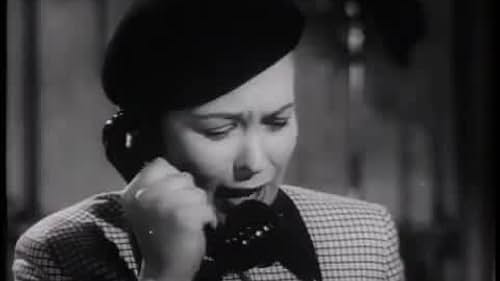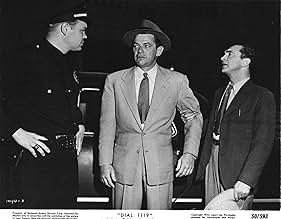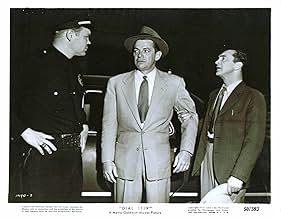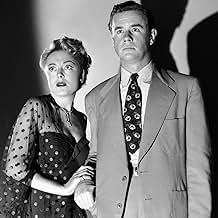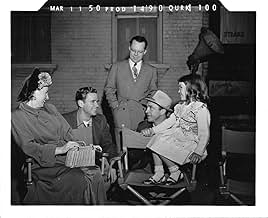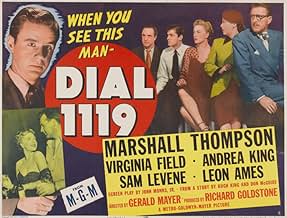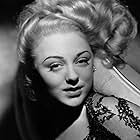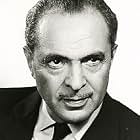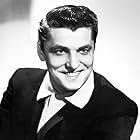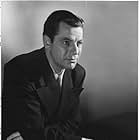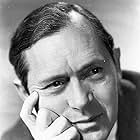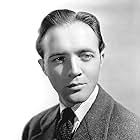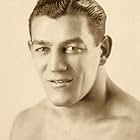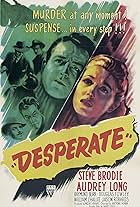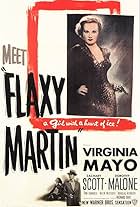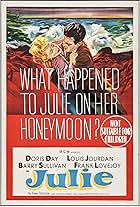VALUTAZIONE IMDb
6,7/10
1617
LA TUA VALUTAZIONE
Aggiungi una trama nella tua linguaAn escaped psychiatric patient causes havoc.An escaped psychiatric patient causes havoc.An escaped psychiatric patient causes havoc.
- Premi
- 1 candidatura
Hal Baylor
- Lt. 'Whitey' Tallman
- (as Hal Fieberling)
Joel Allen
- Undetermined Secondary Role
- (non citato nei titoli originali)
John Alvin
- Television Director
- (non citato nei titoli originali)
Walter Bacon
- Onlooker in Crowd
- (non citato nei titoli originali)
Al Bain
- Onlooker in Crowd
- (non citato nei titoli originali)
Bill Baldwin
- Reporter
- (non citato nei titoli originali)
Barbara Billingsley
- Dorothy
- (non citato nei titoli originali)
Argentina Brunetti
- Wyckoff's Bus Seatmate
- (non citato nei titoli originali)
Trama
Lo sapevi?
- QuizThe television station uses the ominous WKYL (kill) as its call letters, and the name of the town is "Terminal City".
- BlooperPerhaps a joke by the set designer, in an early scene, the dashboard of the bus shows an air conditioner control with the settings HEATING, OFF, and "MANUEL" COOLING.
- Citazioni
Television Announcer: And now for the benefit of the folks who tuned in late, I should like to say that this is the most traumatic spectacle I have ever had the GOOD fortune to witness
Recensione in evidenza
Dial 1119 (1950)
The simple premise here is transcended by gritty, real acting and some nice filming and editing to make a great minor movie. At the start, a psychotic killer is loose, and he is looking for the shrink that once put him in the mental ward. But when he gets to the town where the doctor lives, things go wrong, and he ends up with a set of hostages in a second story bar. Police arrive and surround him, and the standoff begins.
What happens next is partly formula, as each of the hostages has some kind of encounter with the man, either in trying to talk him out of things, or make a phone call for help, or eventually physically attack. There is a shadow of that more famous precursor, "The Petrified Forest," but with none of the literate and romantic elegance of the hostages or the archetypal hype of the criminals. This is more of the gritty truth of what it might actually be like.
Outside the bar, as the townspeople gather and the police strategize, it's a believable situation as well. It's night on the street, and the doctor is found but no one will let him go in and negotiate because the cops have their preferred methods which are tried, one by one, without success. There's a slight feeling of those crowds who were watching Henry Fonda trapped in his upper story room in "The Long Night" (1947), though in this one the crowds are not at all sympathetic. Eventually the doctor takes a chance and goes in to talk to the criminal in what is now an established profession of crisis negotiator.
One fascinating aspect here, for 1950 especially, is the role of live television. A portable "on the spot" t.v. truck arrives and sets up in the street (with more than one camera). And in the bar there is a large screen (yes, very large) television that the criminal turns on for awhile. This allows him to see what is happening outside the bar, and so we get to see both sides of the situation at the same time. While television had been used many times in movies before, it was perhaps never quite so visually integral to the events as here. The technology that is implied for this kind of very large device isn't clear (they mention something in the movie which doesn't explain it, really, but which makes clear they know it's unusual for the time).
There are several excellent (and familiar) actors in this tightly woven plot. The lead (the killer) played by Marshall Thompson is unfamiliar to me, and might be a weaker link--he plays the steely-faced desperado a little too straight (not that we needed Richard Widmark, that's an idea!). The cop side of things is very routine, but there are some nice twists to their progress. In all, well made and mildly suspenseful, and fast enough to never let you down.
The simple premise here is transcended by gritty, real acting and some nice filming and editing to make a great minor movie. At the start, a psychotic killer is loose, and he is looking for the shrink that once put him in the mental ward. But when he gets to the town where the doctor lives, things go wrong, and he ends up with a set of hostages in a second story bar. Police arrive and surround him, and the standoff begins.
What happens next is partly formula, as each of the hostages has some kind of encounter with the man, either in trying to talk him out of things, or make a phone call for help, or eventually physically attack. There is a shadow of that more famous precursor, "The Petrified Forest," but with none of the literate and romantic elegance of the hostages or the archetypal hype of the criminals. This is more of the gritty truth of what it might actually be like.
Outside the bar, as the townspeople gather and the police strategize, it's a believable situation as well. It's night on the street, and the doctor is found but no one will let him go in and negotiate because the cops have their preferred methods which are tried, one by one, without success. There's a slight feeling of those crowds who were watching Henry Fonda trapped in his upper story room in "The Long Night" (1947), though in this one the crowds are not at all sympathetic. Eventually the doctor takes a chance and goes in to talk to the criminal in what is now an established profession of crisis negotiator.
One fascinating aspect here, for 1950 especially, is the role of live television. A portable "on the spot" t.v. truck arrives and sets up in the street (with more than one camera). And in the bar there is a large screen (yes, very large) television that the criminal turns on for awhile. This allows him to see what is happening outside the bar, and so we get to see both sides of the situation at the same time. While television had been used many times in movies before, it was perhaps never quite so visually integral to the events as here. The technology that is implied for this kind of very large device isn't clear (they mention something in the movie which doesn't explain it, really, but which makes clear they know it's unusual for the time).
There are several excellent (and familiar) actors in this tightly woven plot. The lead (the killer) played by Marshall Thompson is unfamiliar to me, and might be a weaker link--he plays the steely-faced desperado a little too straight (not that we needed Richard Widmark, that's an idea!). The cop side of things is very routine, but there are some nice twists to their progress. In all, well made and mildly suspenseful, and fast enough to never let you down.
- secondtake
- 19 apr 2011
- Permalink
I più visti
Accedi per valutare e creare un elenco di titoli salvati per ottenere consigli personalizzati
- How long is Dial 1119?Powered by Alexa
Dettagli
- Data di uscita
- Paese di origine
- Lingue
- Celebre anche come
- Dial 1119
- Luoghi delle riprese
- Azienda produttrice
- Vedi altri crediti dell’azienda su IMDbPro
Botteghino
- Budget
- 473.000 USD (previsto)
- Tempo di esecuzione1 ora 15 minuti
- Colore
- Proporzioni
- 1.37 : 1
Contribuisci a questa pagina
Suggerisci una modifica o aggiungi i contenuti mancanti

Divario superiore
By what name was 25 minuti con la morte (1950) officially released in India in English?
Rispondi
